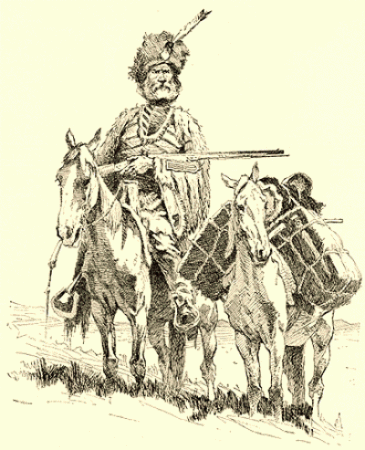-
City Departments
-
- Boards and Committees Budget Committee Planning Commission Public Safety Commission Urban Renewal Agency City Council Agendas & Minutes Public Information Request
- Departments Administration Building 9-1-1 Emergency Communications Center Finance Fire Parks & Recreation Planning Police Public Works
- Community Who Was John Day? John Day Newsletter Lodging Photo Gallery Useful Links
-
- Business & Development
-
Recreation & Events
-
- About Who Was John Day? Community City Newsletter Chamber of Commerce Lodging Photo Gallery Useful Links
- Events and Activities Special Events City Calendar Recreation JDCC Parks & Rec District Park Sites Directory Nearby Recreation
- Library Library Foundation Schools Grant County School District #3 Transportation Grant County Transportation District
-
-
Contact & FAQs
-
- Job Opportunities Alerts and Notifications Email Subscriptions Events and Meetings Agendas and Minutes Calendar
- Contact the City Submit a Request or Concern Staff Directory Social Media Facebook City News
-
Who Was John Day?
Visitors often ask "Was there really a John Day?"
Little is known about the man for whom a river, a dam and two towns (John Day and Dayville) were named. The following story is based on historical fact - some of it may be true. Pictured to the left is an illustration of what John Day might have looked liked.
John Day was a hunter from the backwoods of Virginia. He had been employed by Ramsay Crooks for several years when he arrived in Oregon, at about 40 years of age. He was described as "six feet two inches tall, a handsome man with a manly countenance, straight as an Indian with an elastic step 'as if he trod on springs'". It was his boast that in his younger days nothing could hurt or daunt him, but he had lived too fast and injured his constitution by excesses. Still, he was strong of hand, bold of heart, a prime woodsman, and an almost unerring shot.
John Day was engaged by the Wilson Price Hunt or 'Overland Party' of the Pacific Fur Company (Astorians) as a hunter in the fall of 1810. They were to cross the Plains and Rocky Mountains during 1811, and arrive in Astoria during the winter or early spring of 1812. John Day's early excesses evidently incapacitated him for the extreme hardships of this journey. During December, 1811 he became ill, and his life was saved only because Ramsay Crooks remained behind with him at an Indian camp near Weiser, Idaho. The following spring, Crooks and Day made their way across the Blue Mountains to the Columbia River. They were attacked by Indians, robbed, and left naked near the mouth of the Mau Mau River, thirty miles east of The Dalles. After the attack the two men started back to the friendly Walla Walla country when they met Robert Stuart's party going to Astoria. The two men joined this party and reached Astoria in early May, 1812. The people started calling the Mau Mau River 'John Day River' because he was attacked there. Within a very few years, the maps changed the name to John Day, and then a valley, two cities, the fossil beds and a dam took on the name of the river. It is likely that John Day never actually visited the area which now uses his name so frequently.
On June 20, 1812, John Day was assigned to accompany Robert Stuart back across the plains to St, Louis with dispatches from Astoria to John Jacob Astor. During the night of July 2, 1812, while encamped near Wapato Island, John Day became 'deranged' and attempted suicide. He then ran away from the party and wandered through the woods until he died. (This is the first recorded death) Washington Irving, on pages 111-112 of Volume 2 of Astoria stated that at this point Day was sent back to Astoria, but 'his constitution' was completely broken by the hardship he had undergone and he died within a year. (This was his second recorded death)
After this reference by Irving, John Day receives no further mention in the writings of the Pacific Fur Company or the Northwest Company during their careers on the Columbia River. There is no proof of statements that he retired from his associates and died in a small hunter's cabin on the banks of a large creek that empties into the Columbia a few miles above Tongue Point. (This is his third recorded death)
John Day's name was not mentioned again until 1814 when a 'bridge' of ten canoes containing nearly eighty men left Astoria bound for Athaska Pass. The names of the entire party were listed by Alex Henry in his journal, including 'Passenger Joshua Day'. Since there was no such person among the Eighth Company in Astoria it was concluded that Joshua Day and John Day were one and the same. The next record of John Day is contained in the journal of Alex Ross, Hudson Bay Company Snake River country, 1823-24. It reads 'Went up the Headwaters of the river. This is the defile where in 1819 died John Day. ' Day's defile is a mountain valley which heads in the Salmon River Mountains in Central Idaho. (This is death number four and is considered by most to be the last and correct one)
He left a lawful Will and Testament which was brought back by Donald McKenzie. The will left all of John Day's ready cash to Miss Rachel MacKenzie, and all of his property to Donald McKenzie. The will was given to him by the King of Spain for services rendered. Even though history does not record it, John Day must have been an outstanding man. Wherever he went, a creek, valley or river was named after him.
Now a large dam on the Columbia River bears his name, and the 'John Day country' includes the four branches of the John Day River, with the main branch running through the City of John Day.
